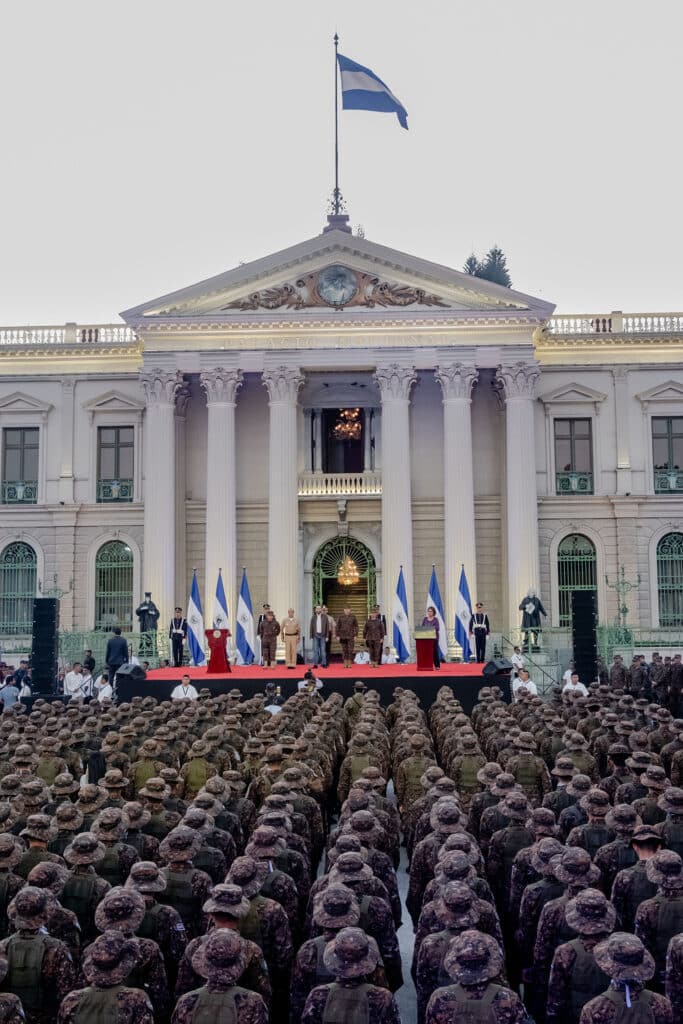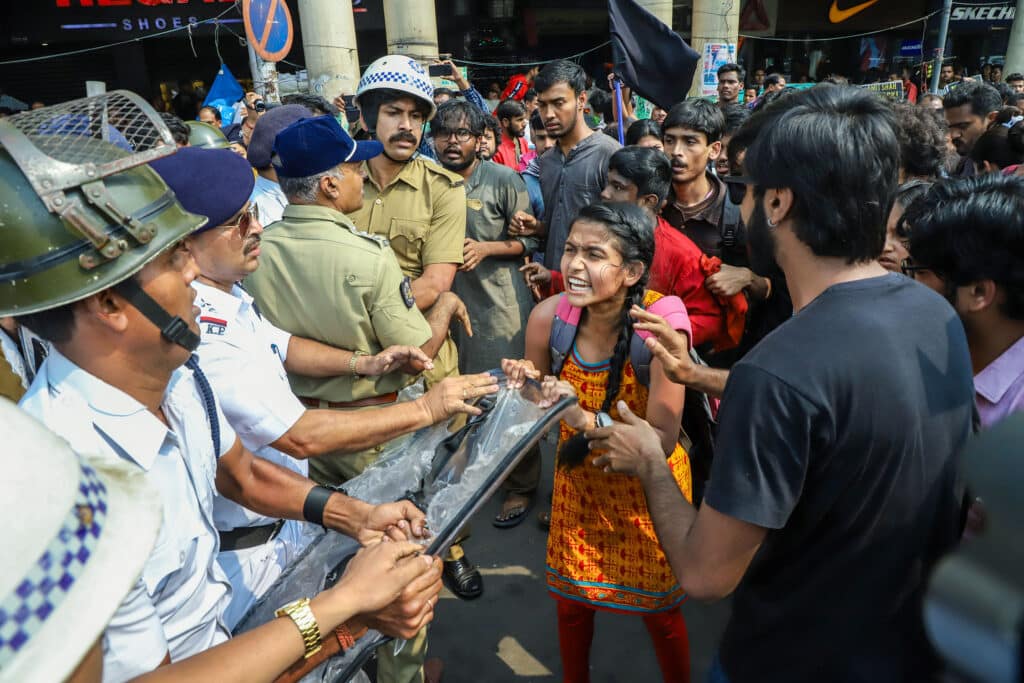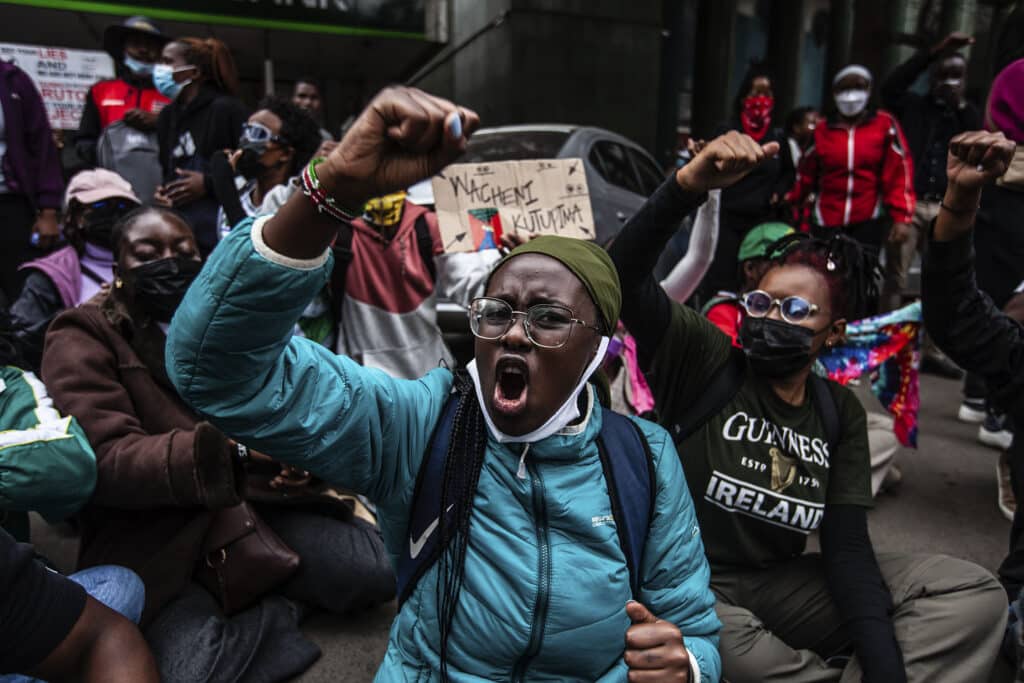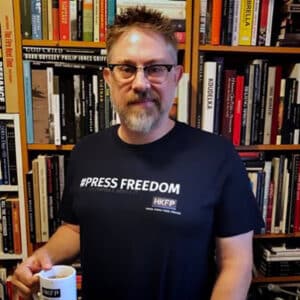2024 is a year of mass elections around the world. In just a single 12-month period, more than 60 countries will be holding elections that will ultimately affect the lives of roughly half of the world’s population.
These elections have the potential to change much about our societies. And they come at a time of political unrest in many parts of the planet where democratic conventions are already under stress from authoritarian forces using legal methods to attempt to gain power. Meanwhile troll farms, “fake news”, and propaganda are being used to sway various parties’ bases, enshrine a mistrust in the election process, and attempt to stir nationalistic feelings.
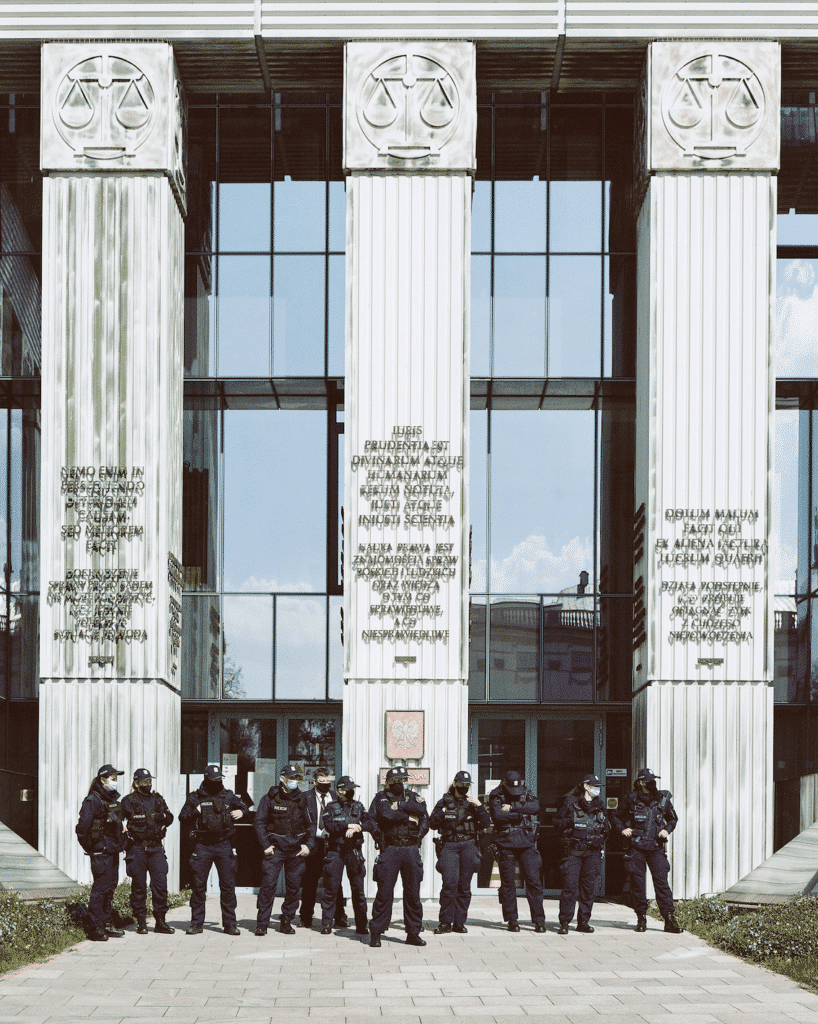
Judge Tuleya is one of the most prominent critics of the judicial reform. Last autumn, the PiS-created Disciplinary Chamber, which has been declared illegal by the European Court of Justice, revoked his immunity on the basis that his rulings displeased the government. He was subsequently suspended. © Agata Szymanska-Medina
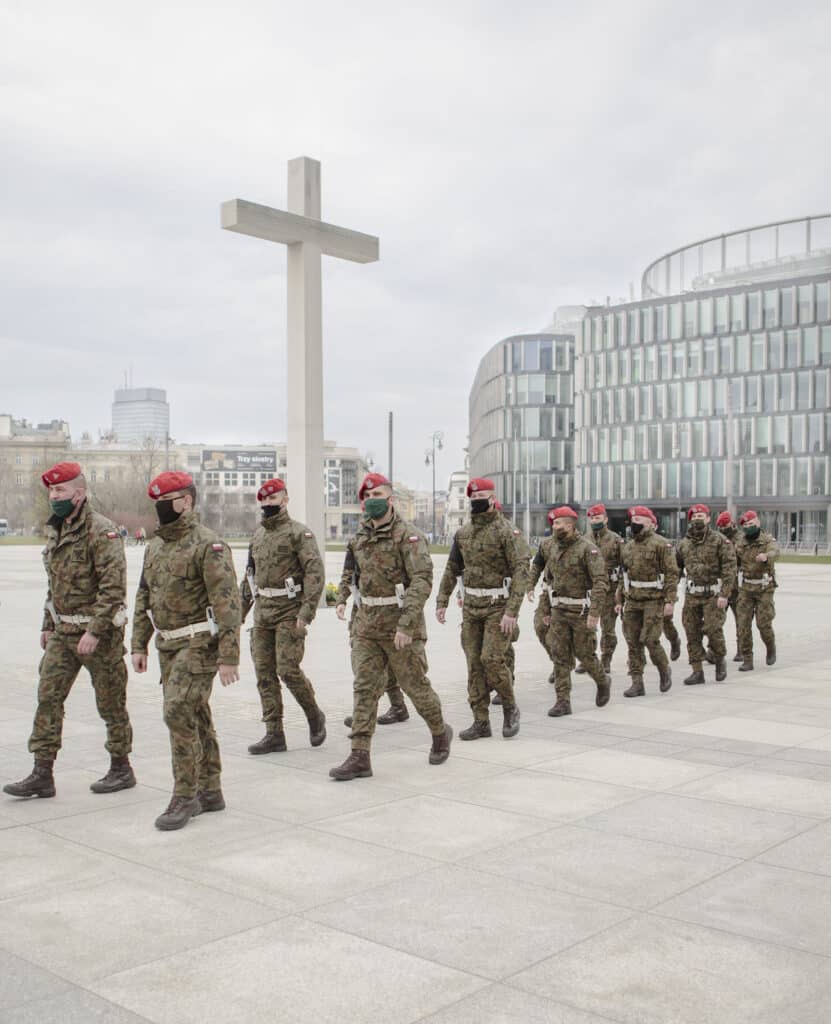
Curated by the Gallatin School of Individualized Study professors Keith Miller and Dr. Lauren Walsh, the exhibition The End of Democracy in Five Acts showcases the work of five photojournalists who have worked across 4 continents to document recent political events in their home countries.
Samson Otieno photographed the 2024 Gen Z demonstrations against tax hikes and the campaigning and demonstrations throughout the electoral process in Nairobi, Kenya. Hannah Reyes Morales captured the impact of surveillance, information technologies, and police crackdowns under the reign of Rodrigo Duterte’s “war on drugs” in the Philippines. Fred Ramos explores the ongoing effects of the rising power of Salvadoran leader Nayib Bukele, and his connection with gang violence and the increasing power of the military. Jit Chattopadhyay’s photographs show the many facets of India’s electoral process under the shadow of Narendra Modi’s nationalist party. And Agata Szymanska-Medina creates imagery that focuses specifically on the persecution of judges in Poland who have been harassed by the state for refusing to support violations of the ruling authorities.
“The challenge of a show like this, which tries to address a deeply philosophical and ideological question, is what does the decay of democracy look like?,” Miller says about the planning. “What these photojournalists are doing is really important, front-line work of showing the day-to-day machinations of these kinds of actions. This could be street demonstrations, as in Samson Otieno’s work from Kenya’s Gen Z demonstrations, or the incursion of the very idea of darkness, as in the work by Hannah Reyes Morales. In the case of Agata Szymanska-Medina, the work is showing judges but also neo-fascist marches. In each case, I think the photographers are really struggling to find a concrete thing to show that says, ‘Look! This is happening.'”
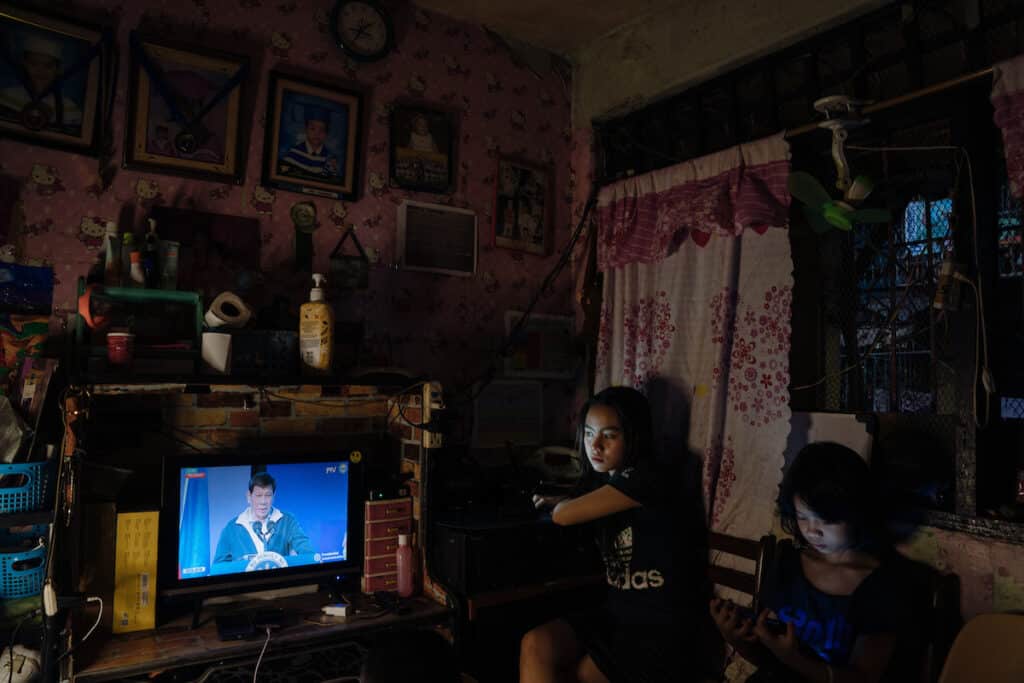
The idea for this exhibition had been on Miller’s mind for a few years. However, he wasn’t sure how to frame it. A series of elections that pushed some countries to a very 21st Century authoritarianism, namely Hungry, Brazil and Turkey, is what solidified the project.
“It seemed like the idea of a coup was less relevant because with the introduction of contemporary modes of communication, social media and the internet, a military coup in the style of the 20th century became perhaps one path to authoritarianism,” Miller says. “The idea that a government could be democratically elected and move the country out of democratic principles isn’t new, of course, but the forms it takes now seem distinct. The concern that democratic processes could be used to undermine democracy was one that I think occurred to a lot of people after 2016, and even more so here in the U.S. with the recent spate of Supreme Court Rulings.”
Miller and Walsh chose to highlight countries from four continents to emphasize the global nature of the issue. The photographs show how law enforcement and legal efforts, rather than non-constitutional processes such as military coups, are employed to undermine the legitimacy of elections and related democratic rights.
“2024, for sure, is a year of many elections, but just a few countries tend to get much of the international coverage,” Walsh explains about the work included in the exhibition. “We want to show that the ramifications for democracy don’t simply play out in three or four ‘main’ spaces. There are consequences globally.”
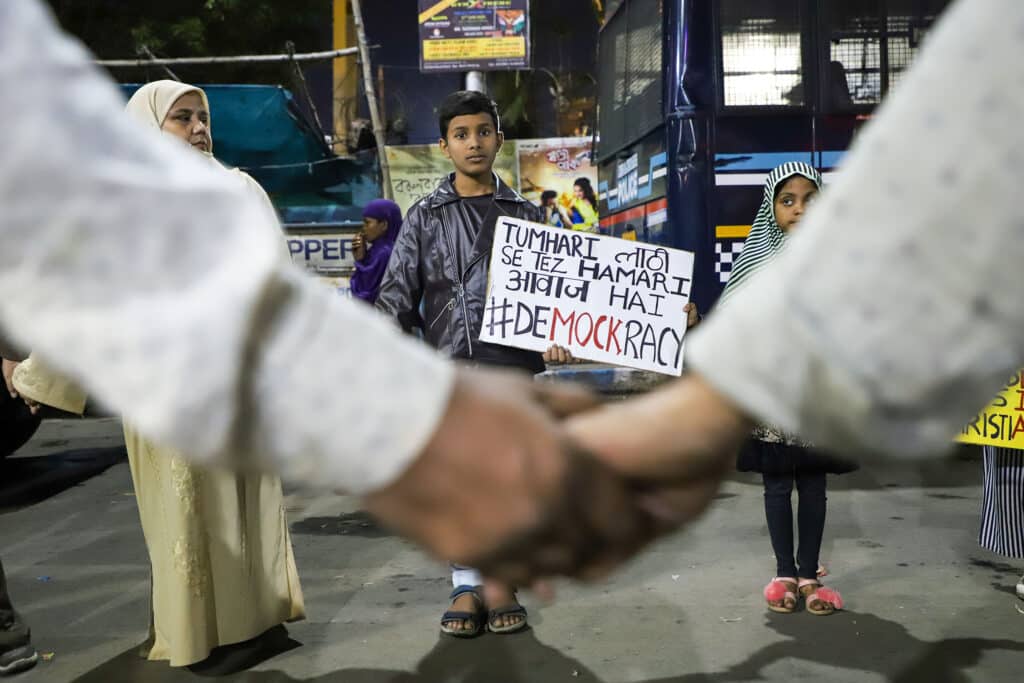
This exhibition is also intentionally on view in the weeks leading up to the United States presidential election. The curators want to evoke connections between the American context and the processes in other countries, where legitimately elected governments manipulate laws and courts to establish systems of repression and surveillance.
In looking at elections, and how authoritarian forces try to undermine democracy, another key aspect to their strategy is the silencing of the press. With global distrust in media growing, in no small part from those who constantly use terms like “fake news” or refer to journalists as “enemies of the people” combined with the use of laws aimed at so-called national security to crack down on journalists, it is harder than for those same journalists to provide information to the public about what is going on.
For photojournalists, this is even a more complex problem, with the proliferation of AI generated images that can so mistrust what actually takes place and try to make viewers question if what they are seeing is real or fake, depending on what a politician or political party tells them.
“Historically, there have always been attacks against the press, including forces that aimed to discredit the press. In our digital, interconnected world, it does feel more prevalent than ever,” Walsh says. “But perhaps the biggest updates to the contemporary moment are the seemingly infinite distribution sites, like social media, alongside the uptick in synthetic imagery (generative AI). And of course, anyone can create and publish imagery. But that doesn’t make you a journalist, and so the work of photojournalists of course continues to matter. Photos that are vetted, that are made according to ethical standards, that are properly sourced. These are still the standards we expect of professional photojournalists. And at the same time, media and visual literacy are key; the public needs to be cognizant about which images they can trust and which they should question, which sources are reliable, and which should raise skepticism, which outlets fact check, etc.”
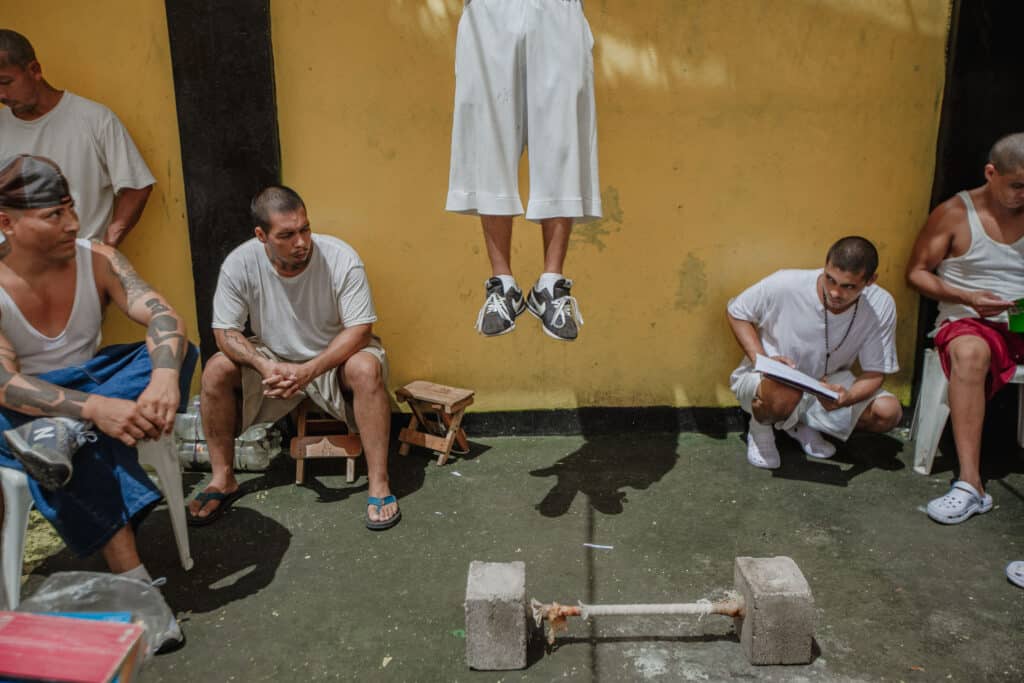
Threats and violence against journalists worldwide are also unfortunately common. Reporters without Borders (RSF), an international non-profit organization who is at the forefront of the defense and promotion of the freedom of information, has recorded 42 journalists and media workers who have been killed since January 1st of 2024. They also record 583 journalists and media workers currently detained from around the world.
“Journalists document and, at times, expose, so that a greater public can be aware. The issues they face will frequently depend on where they are located. Threats take different forms in different places, with regard to differing kinds of documentary work. They can range from online harassment to censorship to physical assault to death threats and actual murder,” Walsh explains. “In a general way, journalists around the world face staggering risks and threats to do their job. Threats against the free press are threats against democracy.”
All of these factors, including threats against journalists, are how democracies die. The toll they will play on countries around the world won’t be able to be calculated till this year’s elections are concluded, and the results are in. But their consequences will be felt, one way or the other.
But as Miller points out, nothing is impossible, or inevitable, as long as there are those who fight for, and show what the truth is, and fight for it. And those seeking authoritarianism can be stopped and democratic conventions saved.

“I think it’s important to see things as simultaneously unique and local and as parts of a larger global series of phenomena. For someone in Poland it might be easy to say, ‘We’re lost. They have the courts, they have the congress, etc’. But then you can look at India, where only a year ago Modi seemed impossibly dominant. Now, things like that permanence, that impermeability, is gone. As Lauren says, media literacy is crucial. So is the idea that we must remain tenacious in the demand for justice and change. Things like the Gen Z demonstrations in Kenya and the student uprising in Bangladesh this summer should inspire people globally to remember that the impossible can often become the inevitable as long as one is unwilling to let it remain impossible.”
The End of Democracy in Five Acts is on view from September 9 through October 14, 2024 at the NYU Gallatin Galleries located at 1 Washington Place New York, New York. The gallery is open Monday through Friday, 10:00 a.m. to 6:00 p.m., and Saturday, 10:00 a.m. to 6:00 p.m.

